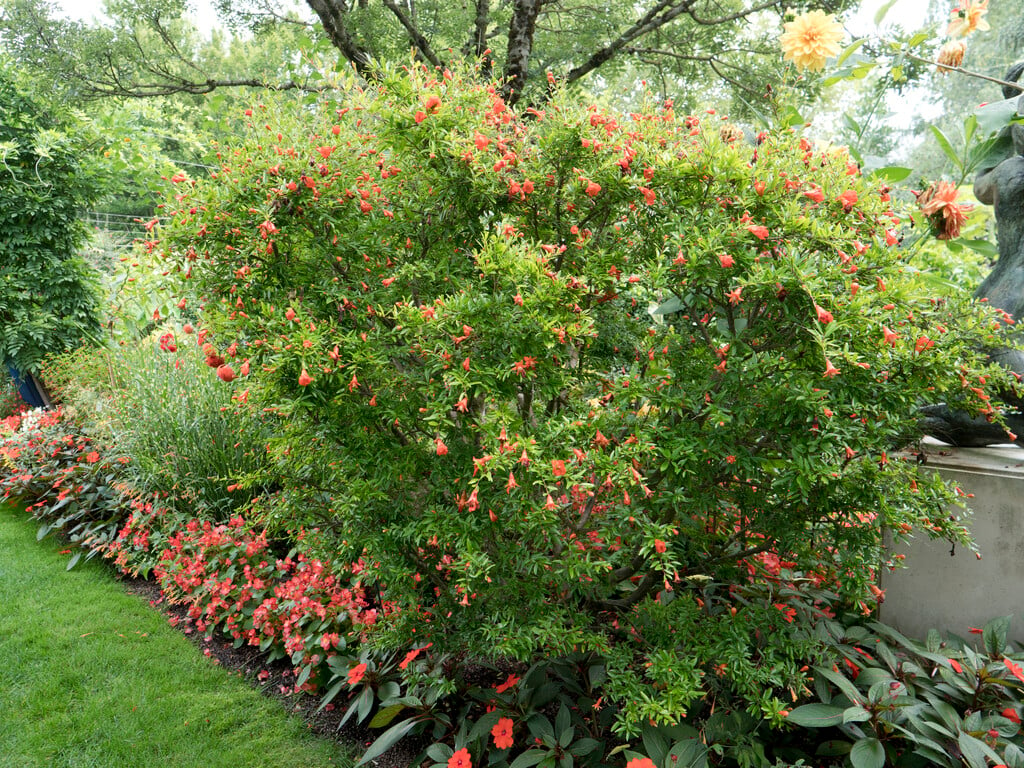Punica granatum
pomegranate
A rounded shrub with glossy, narrowly oblong leaves, bronze in spring, and funnel-shaped bright scarlet flowers 3-4cm across in summer, sometimes followed by spherical, reddish-brown fruits up to 12cm across
Size
Ultimate height
1.5–2.5 metresTime to ultimate height
10–20 yearsUltimate spread
1.5–2.5 metresGrowing conditions
Moisture
Well–drainedpH
Acid, Alkaline, NeutralColour & scent
| Stem | Flower | Foliage | Fruit | |
| Spring | Bronze | |||
|---|---|---|---|---|
| Summer | Red | Green | ||
| Autumn | Green | Brown Red | ||
| Winter |
Position
- Full sun
Aspect
South–facing or West–facing or East–facing
Exposure
ShelteredDrought resistance
Yes Hardiness
H3Botanical details
- Family
- Lythraceae
- Native to GB / Ireland
- No
- Foliage
- Deciduous
- Habit
- Bushy
- Genus
Punica are deciduous shrubs of bushy habit, sometimes spiny, with simple leaves and showy red flowers, followed by spherical fruits with edible pulp
- Name status
Correct
- Plant range
- E Med. to Himalaya
How to grow
Cultivation
Under glass grow in peat-free, loam-based compost, in a large container or greenhouse bed, in full light with shade from hot sun. During growth, water freely and apply a balanced liquid fertiliser monthly. Water sparingly in winter. Can be grown outdoors in a well-drained, fertile soil in full sun. Requires high autumn temperatures (13-16°C) for fruit to ripen
Propagation
Propagate by seed sown at 13-18°C in spring or root semi-hardwood cuttings with bottom heat in summer
Suggested planting locations and garden types
- City and courtyard gardens
- Patio and container plants
- Mediterranean climate plants
- Wall side borders
Pruning
Pruning group 1 from spring to summer. Pruning group 13 if wall trained
Pests
Generally pest-free
Diseases
May be susceptible to honey fungus (rarely)
Love gardening
Sign up to receive regular gardening tips, inspiration, offers and more
View our Privacy Policy
Get involved
The Royal Horticultural Society is the UK’s leading gardening charity. We aim to enrich everyone’s life through plants, and make the UK a greener and more beautiful place.

